Award-winning freelance writer Lizzie Davey certainly understands the art of the side hustle. In this guide, Lizzie explains the best side-hustles - and how you can get started.
Key takeaways
- Digital products can generate $1,000 monthly in passive income once created.
- Virtual assistants earn flexible income by providing remote administrative support to businesses.
- Affiliate marketing requires high volume since commission rates are typically around 20%.
- Social media sponsorships become viable with 1,000+ followers on platforms.
- Print-on-demand eliminates inventory management while selling custom t-shirt designs.
By day, I’m a freelance writer. I create content for brands through blog posts, sales pages, case studies, and ebooks. But I also have a side hustle. In the time spent outside of my day job, I create resources and courses for other freelancers, offer mentoring, and host webinars and workshops.
Why? Because it allows me to make more money while doing something I enjoy and am also good at.
Side hustles are a great way to earn extra income, flex your creativity in different areas, and profitably explore hobbies. My side hustle was born out of necessity—I had lots of freelancers coming to me asking for advice. But there are plenty of side hustle ideas that you can get started with right away.
Many of these side hustle ideas can be done from anywhere with just an internet connection and a little bit of elbow grease. But, for those who want to get hands-on with it, I’ve also included some offline side hustles that can help you earn extra monthly income.
Digital side hustle ideas: Make money online this year
1. Offer freelance services
I’m a full-time freelancer, but I know plenty of freelancers who have a few clients on the side or do a couple of projects a year to top up their main income. The beauty of freelancing is you can tap into it whenever you have the spare time or need extra cash. Even better, you can offer freelance services in almost any industry, whether graphic design, web development, writing, or marketing.
My freelance website lists the different services I offer.

How to start: figure out what you’re good at and turn that into a service offering. Set up a one-page website or create a LinkedIn profile to connect with people needing those services.
2. Sell digital products
I’m a big fan of digital products. I currently have three digital products that make me an extra $1,000 a month. The best part is, that once you’ve created a download, template, or worksheet, you can sell it over and over again without any extra work. It helps to have a pre-built audience to sell your products to, but even if you don't - you can still generate sales by uploading your digital products to marketplaces like Whop.
How to start: consider what kind of digital product your audience could benefit from or what skills you have that you can package into a downloadable. Use a tool like Canva to create your digital product and upload it to your Whop hub to start selling.
Recommended next read: How to sell digital products: A step-by-step guide
3. Become a virtual assistant
Virtual assistants provide remote administrative support to businesses. You can work from anywhere—all you need is an internet connection. VA tasks can range from updating website copy and posting on social media to answering emails and compiling lists of contact details.
Most businesses ask for a few hours of VA help a week, which means you can do it alongside your full-time job or piece together a full client roster with multiple businesses.
Anna Burton offers business and personal services as a VA, including bookkeeping, holiday research, and website administration.
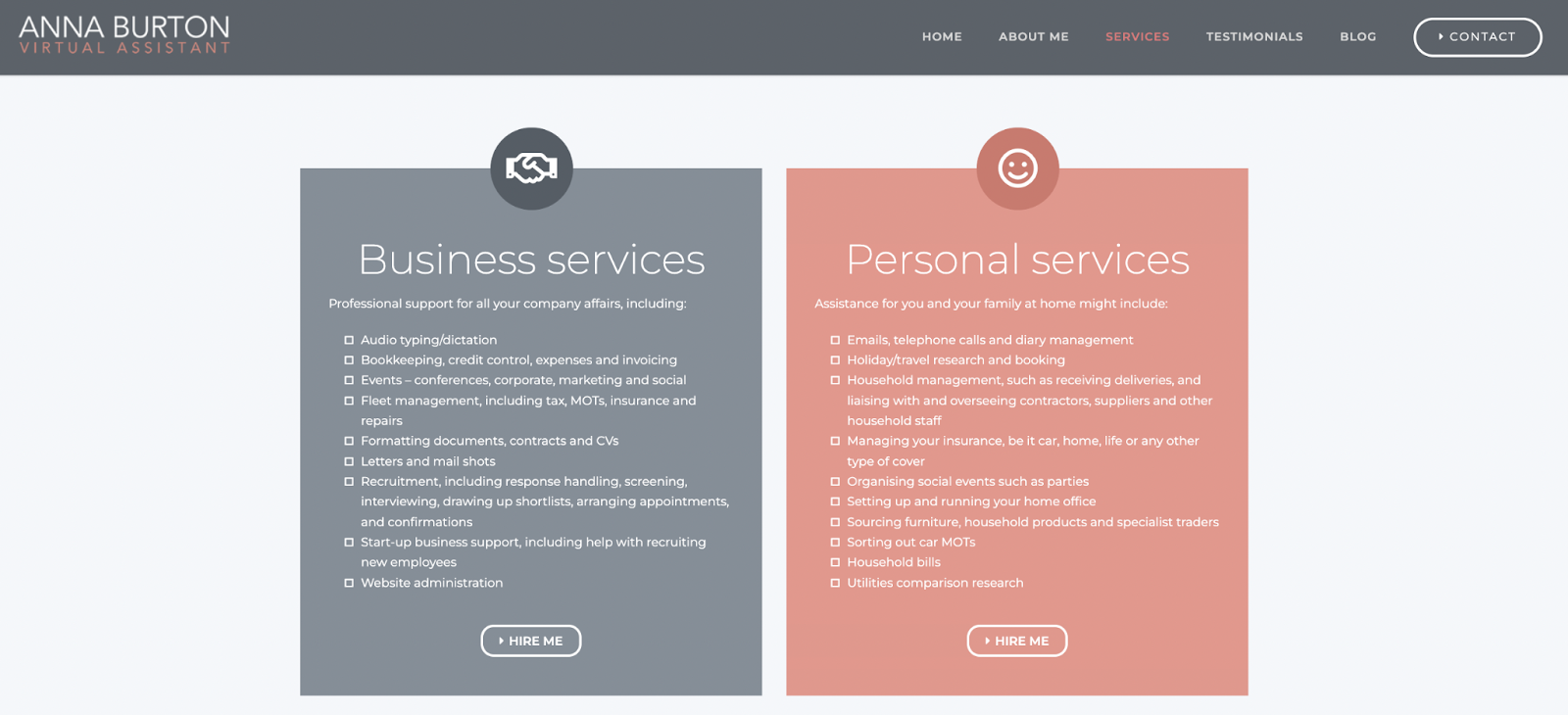
How to start: sign up for a virtual assistant matching website and apply for positions. Stick to what you’re good at and enjoy—for example, if you love creating social media graphics, look for businesses that are specifically seeking help in that area.
4. Offer online tutoring
My mentoring sessions fall under this example. I basically sit with a fellow freelancer for half an hour and go through their most pressing questions. But you can offer classes in anything you’re skilled in—maths? English? Managerial skills?
Again, you can pick up tutoring as and when you need to replenish your income. All you need is a way to host the sessions, which can be done via platforms like Zoom, Google Meet, or Whop (you can host video calls from your Whop hub and sell digital downloads, like worksheets, in that same hub).
These maths tutors charge up to $30 an hour.

How to start: pick a topic you’re proficient in (you can choose a couple if you don’t want to box yourself in) and start promoting your classes. Either find students yourself on social media or join tutoring websites and advertise on local noticeboards.
5. Design and sell t-shirts
Print-on-demand websites like Printful make it easy to upload designs onto clothing and ship them directly to customers. If you’ve got a good eye for design, you can create your own logos, motifs, and illustrations to print onto t-shirts.
Try to come up with unique designs or a particular theme so people will remember your brand.
The best part is, that you don’t have to handle stock or ship the t-shirts yourself. Most t-shirt printing platforms will do it for you—the customer simply enters their payment information and address, and the platform will automatically deliver it to them.
Jolie Noire uses Printful to print designs onto t-shirts that it then sells on its website.
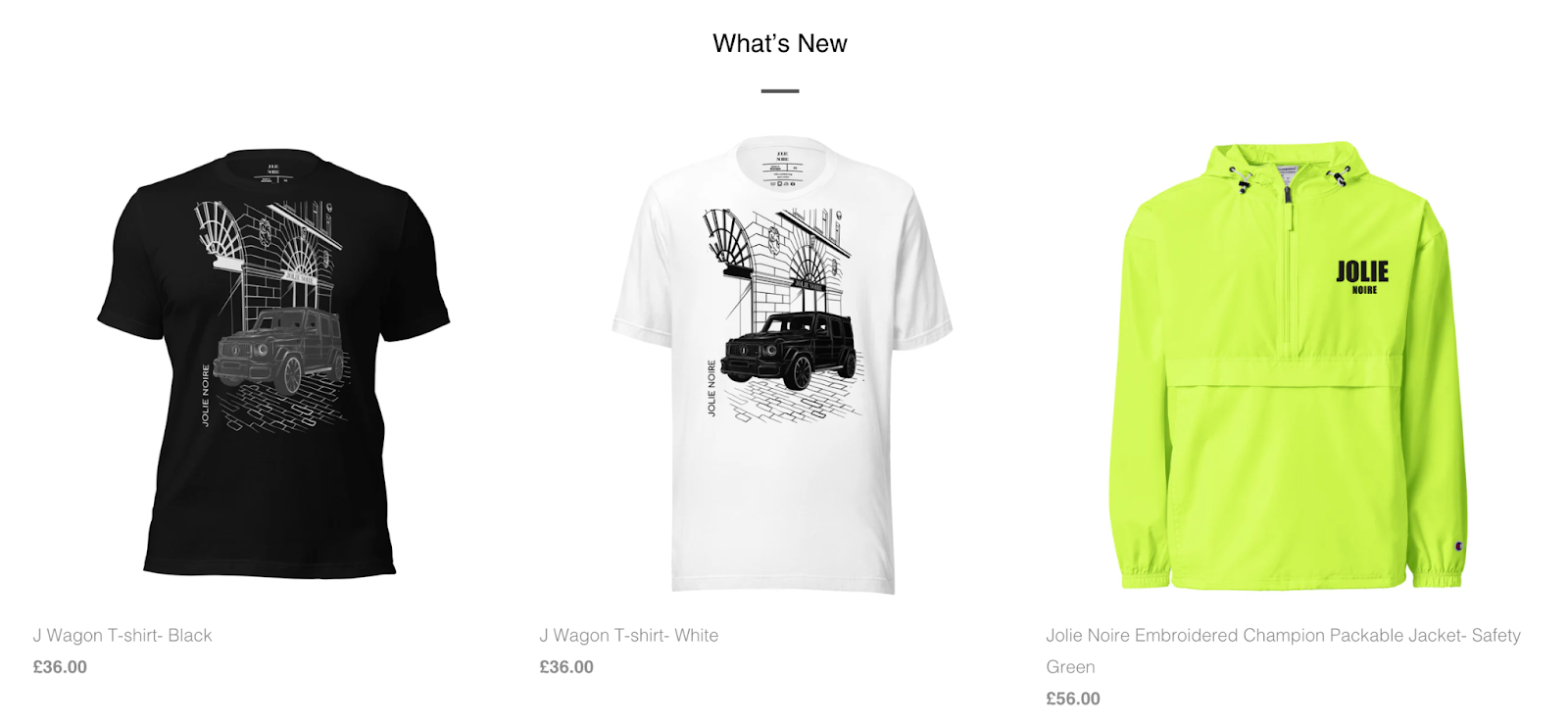
How to start: sketch out several potential t-shirt designs and upload them to a print-on-demand website. Promote your products on social media to get your first few sales, then consider expanding your range and trying out new marketing methods.
6. Start an ecommerce store
Why not start an ecommerce store? You don’t have to sell clothes. In fact, you can sell pretty much any kind of product, from candles and dog toys to hats and ice cream. Setting up your store requires a bit of time, especially if you’re making or sourcing your own products. But if you don’t fancy setting up a store from scratch, you can sell your products through marketplaces like Etsy or Amazon which have a pre-built audience.
Japanese food brand Cabi Soy sells a handful of sauces directly to consumers via a Shopify storefront.

How to start: decide what products you want to sell in your ecommerce store and create a storefront. Alternatively, upload your product catalog to marketplaces like Etsy and Amazon to tap into their expansive user bases.
7. Become an affiliate marketer
Affiliate marketers promote products by other businesses in exchange for a slice of commission every time they make a sale. This is a great way to earn extra income without your own products.
However, you do need some kind of audience or promotion strategy to make it work as a lot of it relies on volume. For example, if you’re getting a 20% cut from each sale, you need to sell at least four products or services to generate the same revenue as you would have selling just one product not in an affiliate scheme.
Jeremy and Lia of Practical Wanderlust have a packing list guide that includes affiliate links to their favorite travel products.

How to start: sign up for affiliate programs relevant to you and your audience. Create content that promotes your affiliate links, such as blog posts, social media captions, and ads.
Whop is a great resource for affiliate marketers. With Whop you can earn money by referring customers to join whops, and also by referring people to create whops. Find out more in this guide to affiliate marketing on Whop.
8. Start dropshipping
Dropshipping is a term used to describe an online store that doesn’t hold inventory. Unlike traditional ecommerce stores that stock products and manage shipping and delivery, dropshippers only have to worry about attracting customers to their stores.
Once an order is placed, a third-party company takes over to fulfill and ship the order. This is a great way to experiment with running an ecommerce store without the hassle of building an inventory.
Notebook Therapy runs an online dropshipping store that sells notebooks from various different brands and lines.

How to start: research third-party dropshipping providers and choose what kind of products you want to sell in your store. Then, promote your products to potential customers.
9. Start a blog or newsletter
This is where my side hustle began. Blogs and newsletters are ideal for building an audience, but can also be a great foundation for selling products, courses, and paid subscriptions.
When I started my blog back in 2012, it was just a way to voice my thoughts and flex my creative muscles. I had no idea it would turn into a viable income stream that’s allowed me to sell sponsorships, courses, and downloadables.
There are a few ways you can monetize your blog or newsletter:
- Sell sponsorships to relevant businesses who want to reach your audience
- Create courses and resources to sell to your audience
- Insert affiliate links into blog posts to generate commission
- Sell paid subscriptions or a paid membership for recurring revenue
- Promote freelance or coaching services
Emma Gannon runs a paid newsletter, The Hyphen, that offers different subscription tiers.
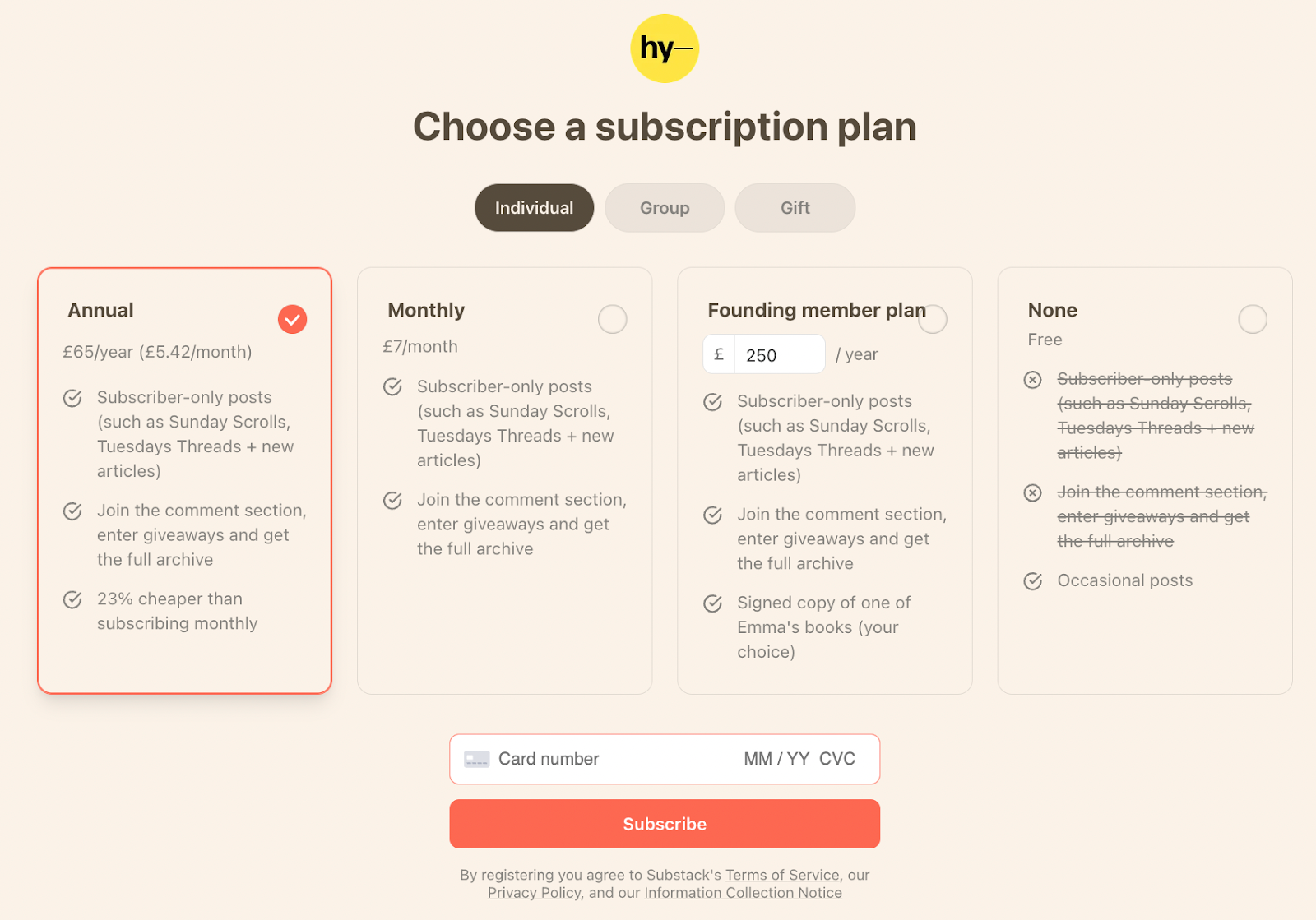
How to start: it helps to have a niche for your blog or newsletter, so think about topics you know a lot about or enjoy writing about. You can build your blog on a content management system (CMS) like WordPress, Squarespace, or Wix, or add a widget to your Whop hub that lets you create a blog and send a newsletter.
Recommended next read: Side hustles from home: How you can earn money without leaving your house
10. Create online courses
This was my first foray into side hustling. Back in 2016, I built an online course helping other freelancers start their businesses. I set up an account on Teachable, uploaded the content, and promoted it to my audience. You can also use course-specific platforms like Udemy that host and promote your courses for you.
But the most comprehensive platform is Whop, where you can not only sell courses but also create a community alongside your course, sell ebooks, files, and anything else digital.
Grey’s Store has several online courses that show students how to build a SaaS product.
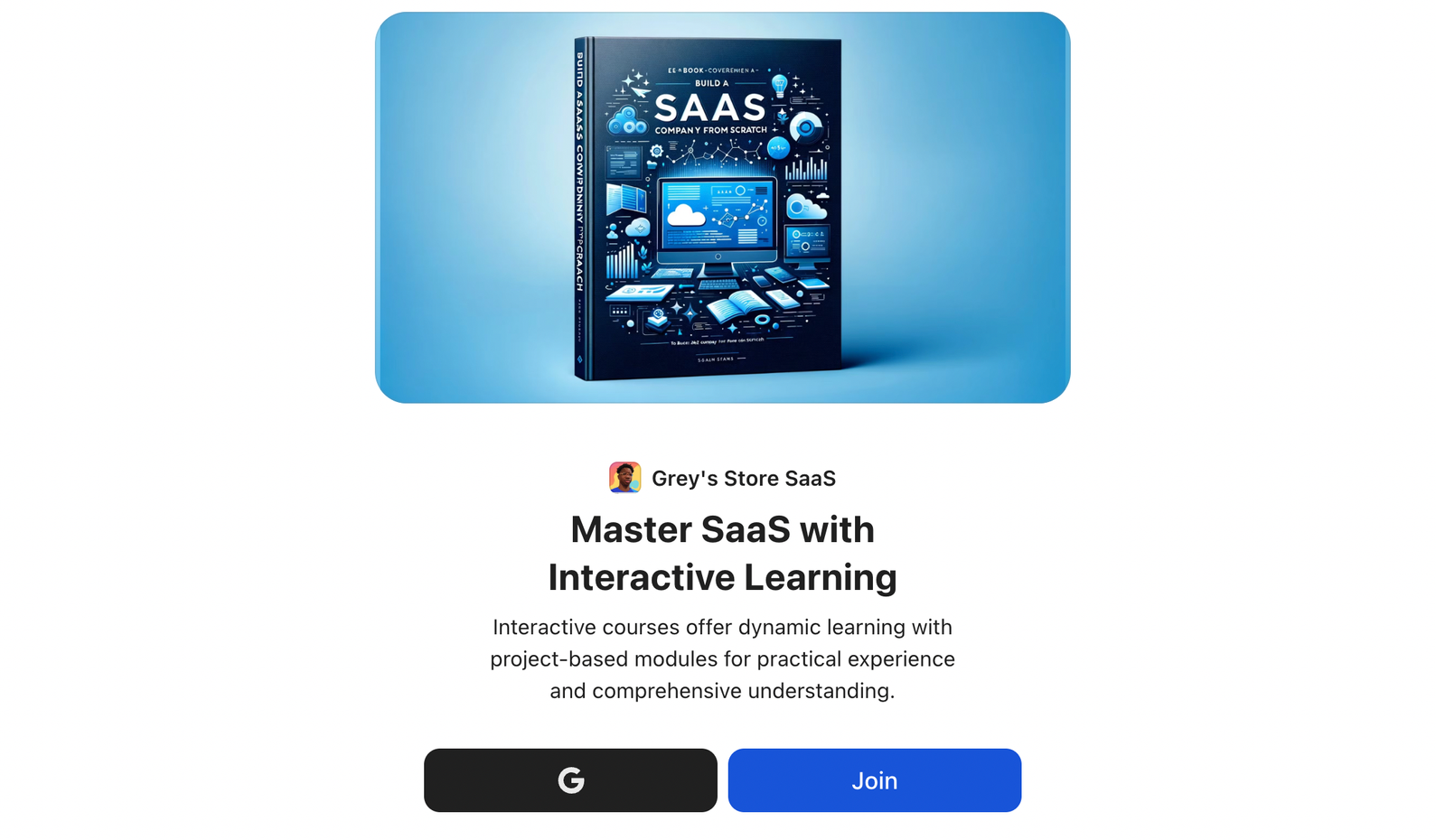
How to start: consider what topic you’d like to create a course about. I drew inspiration from the most common questions I received from my blog readers, but you can choose something you’re passionate about. Create a whop and add a course app that lets you upload your course content and sell it to students.
11. Get sponsorships on social media
Most people have at least one social media account. If you have some semblance of a following (1,000+), you can generate income by selling sponsorships and promoting companies on your social media accounts.
I’ve worked with SaaS tools that my audience might use and promoted them on LinkedIn and X, but you might work with B2C brands to promote your favorite products.
India Moon works with brands like Uniqlo and promotes their products on her Instagram feed.
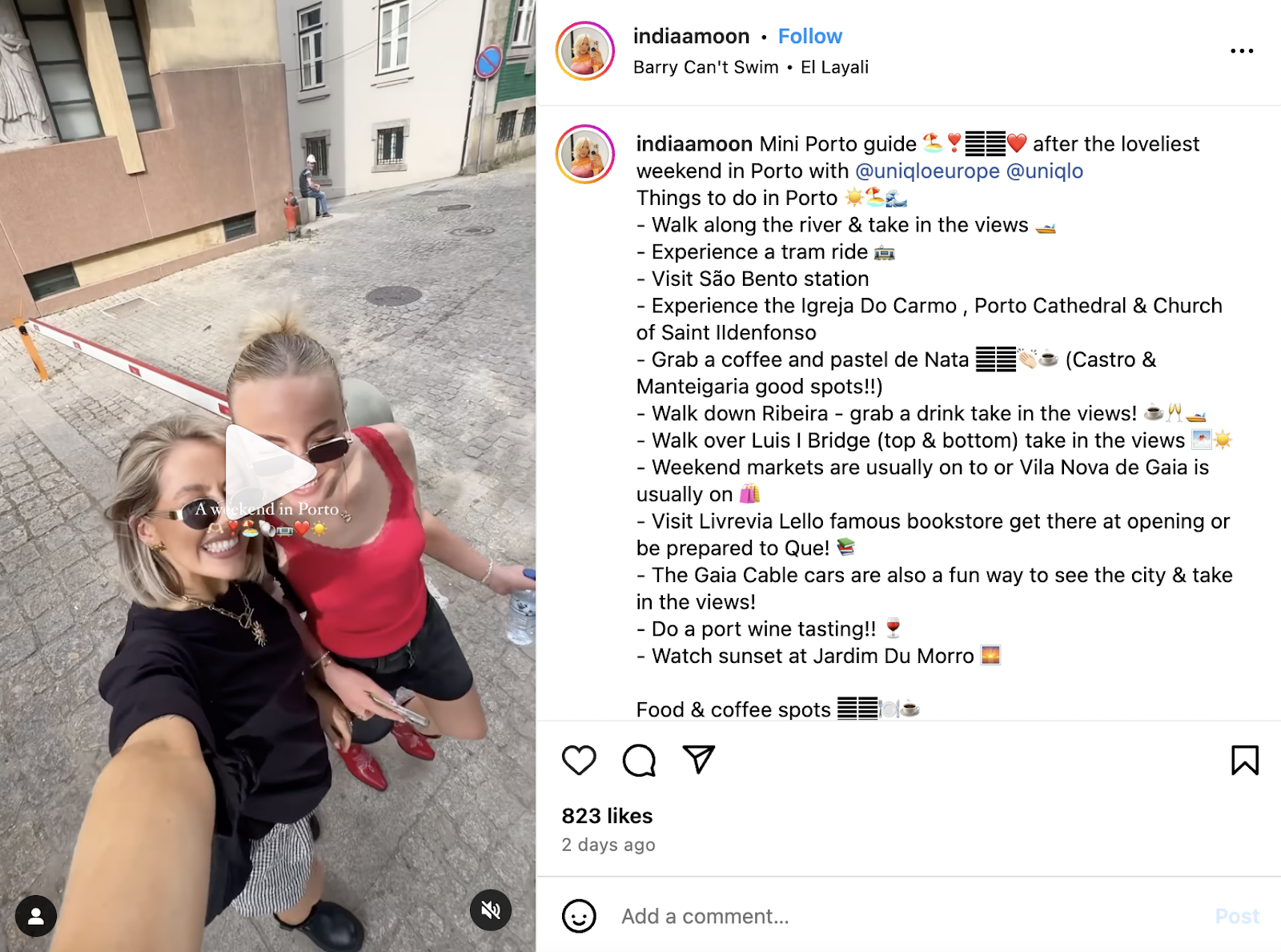
How to start: it’s easy to start with what you know. Think about the products you use regularly and reach out to the marketing teams of those brands to pitch a partnership or sponsorship opportunity. If you don’t have a sizeable following yet, work on growing your audience so your account is more appealing to brands.
12. Offer home services
Plenty of people need help with gardening, IT support, cleaning, and DIY. Consider offering these services to the local community to make a side income. For example, if you’re particularly good at setting up new computers or troubleshooting tech issues for your family and friends, expand those services to your local community or offer remote help via Zoom or Whop.
How to start: think about what you’re good at (or what your friends and family regularly come to you for help with). Create a flyer or a simple website and promote these services to your local community. Word-of-mouth is the name of the game here—once you start getting customers, your side hustle can snowball quickly when they refer you to their family and friends.
Ready to be your own boss? Discover small business ideas that can turn your dreams into reality
13. Plan events
Are you a stickler for a clipboard and organization? Consider selling event planning services for weddings, parties, and corporate events. Many of these events take place on evenings and weekends so you can plan them around your full-time job. You’ll need strong organizational and people skills, but if you’ve already planned a few events for friends, there’s no reason you can expand your reach and offer this service to your local community.
Roisin Skinner is an event planner and host who organizes corporate events for companies all over the world.

How to start: ask for testimonials and photos from events you’ve already planned and use these to promote your services on social media. Look for local Facebook groups or venues that offer event packages to customers.
14. Fill out online surveys
It’s not a huge money-maker, but answering online surveys and taking part in research can earn you a little bit of side income. Sites like Swagbucks, InboxDollars, and Survey Junkie pay respondents in cash or gift cards when they take part. There’s a limit to how many surveys you can take part in on each website, but if you gather a big list of potential paid survey sites, you can bring in some extra cash each month.
How to start: sign up for paid surveys and research sites to register your interest. Browse relevant surveys and take part in the ones you qualify for.
15. Offer social media services
Anyone with experience using social media (read: being chronically online) can be a social media manager or offer social media services. If you know how to create engaging posts, handle social media interactions, and understand analytics? Social media management could be a perfect hustle for you. Plus, it’s easy to learn from other digital marketers and SMMs online who post educational content on YouTube and Instagram.
How to start: You gotta have skin in the game. Start by creating your own account for your services and creating content that conveys to businesses why they need YOU.
Use your account to build a portfolio and showcase your results. You can also find clients on freelance platforms like Fiverr or Upwork and by networking with small businesses in your area.
16. Offer language translation services
Can you speak another language? Use it to your advantage by offering translation services for documents, websites, and other content. Many businesses are looking for help reaching new markets and a large part of that is speaking the same language as their customers.
These German-to-English translators charge up to $40 an hour for their services.
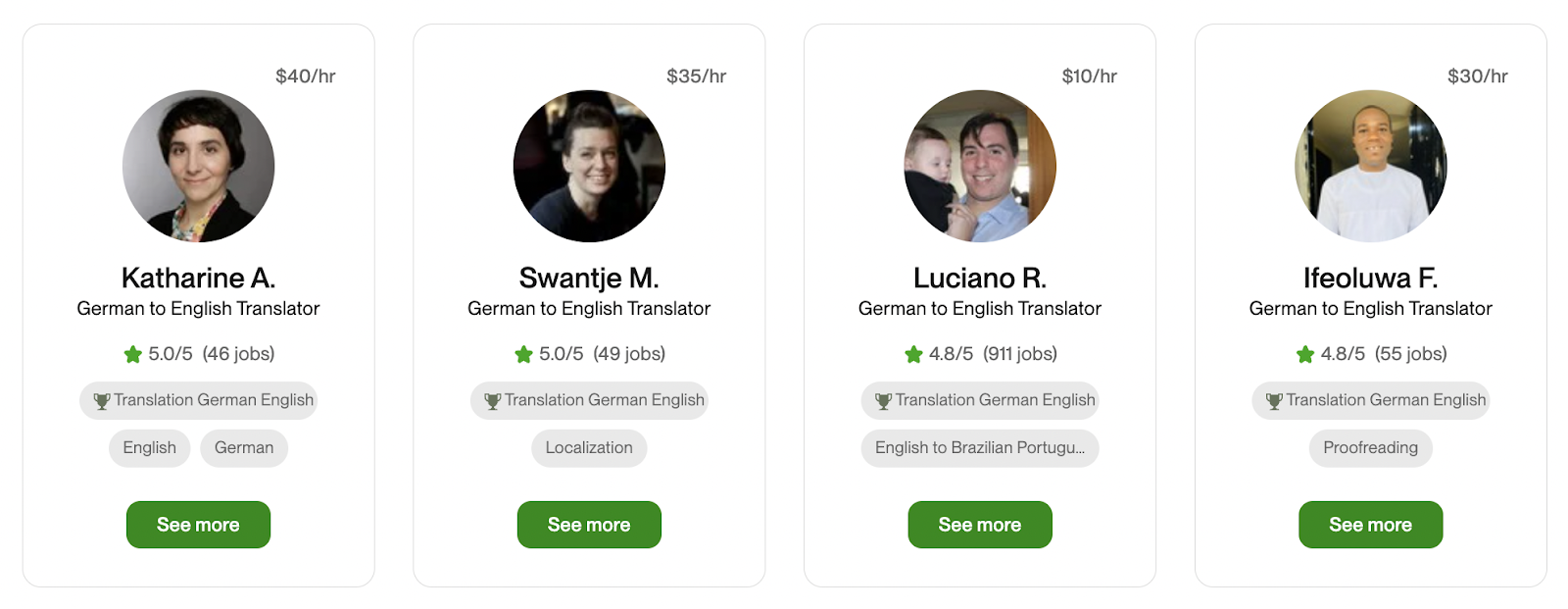
How to start: build a simple website promoting your language translation services, sign up for a gig site like Upwork, or create a translation services product on Whop and make sales through your own whop.
17. Sell your photos
If you’re a keen photographer, you can make extra cash by selling your photos on stock photo sites, such as Shutterstock and Unsplash. Alternatively, you can offer your photography services for events or portraits, or sell digital downloads of your photos with Whop.
Leo Bayard sells his street and landscape photography on Unsplash but is also available to hire for people who want commissioned photo shoots.

How to start: sign up for paid stock photo sites and upload your images. If you want to sell your photography services, create a simple website to promote your availability and join local groups to find potential clients.
Check out how to make money selling pictures online.
18. Create and sell handmade crafts
If you spend your evenings crocheting in front of the television or making pottery, there’s money to be made. Turn your creative hobby into a side hustle by selling your creations on handmade marketplaces like Etsy or building your own storefront to sell your goods on. You can also venture out into the wild and run a stall at local markets and events to reach more potential buyers.
Alice Eden sells her handmade jewelry online.
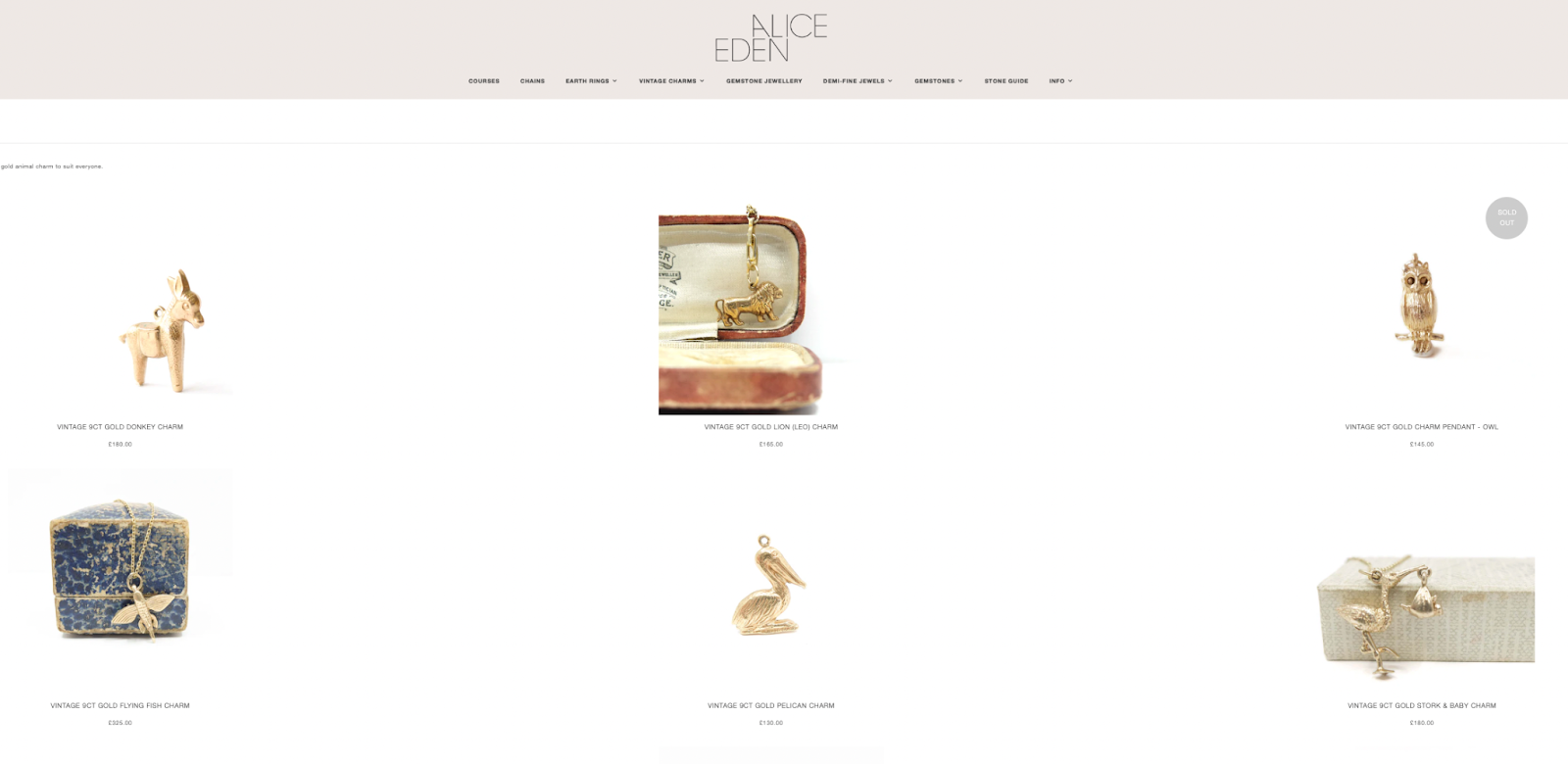
How to start: either learn a new creative skill or use an existing one to generate an inventory of products. Either upload your products to a handmade marketplace or create your own storefront. Don’t forget to sign up for local craft markets and events to get in front of more people.
If you're selling handmade digital goods (like artwork, digital planners, and journals) then you can sell these with Whop.
19. Offer pet sitting or dog walking services
Prefer to spend your days outside? Consider offering dog walking or pet sitting services. Yes, while this is not a digital side hustle, it is still one that you can promote online. Many people need a reliable person to look after their pets while they’re away or walk their much-loved dog while they’re at work.
Check whether you need any qualifications to become a dog walker in your local area and ensure your house is set up for furry guests if you plan to look after them in your home.
How to start: first, find out if you need any qualifications. Then, create a flyer or a simple website to promote your services and spread the word in your local community. Post on local Facebook groups, put flyers through doors, and advertise in your community newsletter.
20. Deliver groceries or parcels
Lots of people make a side income delivering food and packages to locals. If you’ve got a vehicle and a driving license, consider signing up for delivery services like GrubHub, DoorDash, UPS, and FedEx. These companies are often on the hunt for more drivers.
The best part is, that you can choose your own hours. You can work for a few hours after your full-time job or do an extended stretch at the weekend to top up your income. Again, while this is not an online side-hustle, it is one with a digital aspect, thanks to delivery apps.
How to start: sign up on delivery company websites and check you meet their requirements. Follow the protocol for each company to ensure you have the best chance of success.
Find out how much you can earn as a delivery driver.
21. Become a transcriptionist

Here’s one that only requires a keen ear and good typing speed. Companies, podcasters, and content creators often need audio or video content transcribed into written text.
The beauty of transcription is that it can be done from anywhere, and you can choose how much or how little you work.
The pay can vary depending on the complexity of the work and turnaround time, but transcription jobs can offer a steady flow of work if you get into a rhythm. There are also specialized niches like medical or legal transcription, which may require some additional training but often come with higher pay rates.
How to start: You can create a profile on transcription platforms like Rev, TranscribeMe, or Fiverr. Ensure you have a reliable transcription software or tool, and test your typing speed.
Once you build a portfolio, you can attract repeat clients and expand into higher-paying niches.
22. Offer SEO & digital marketing services online

If you have a background in digital marketing, use it to offer SEO or other marketing services online. Businesses always look for new ways to improve their online presence and drive website traffic.
SEO experts help clients rank higher in search engines, while digital marketing uses strategies like social media management and paid ads. The demand for these services is high; businesses need help growing online. Plus, it’s easy to grow your skills and learn more with free online resources for marketers.
How to start: Learn the basics of SEO and digital marketing through online courses or tutorials (check out our marketplace, too). Then, start offering your services to local businesses via LinkedIn, social media, or by listing your skills on platforms like Whop.
23. Video editing
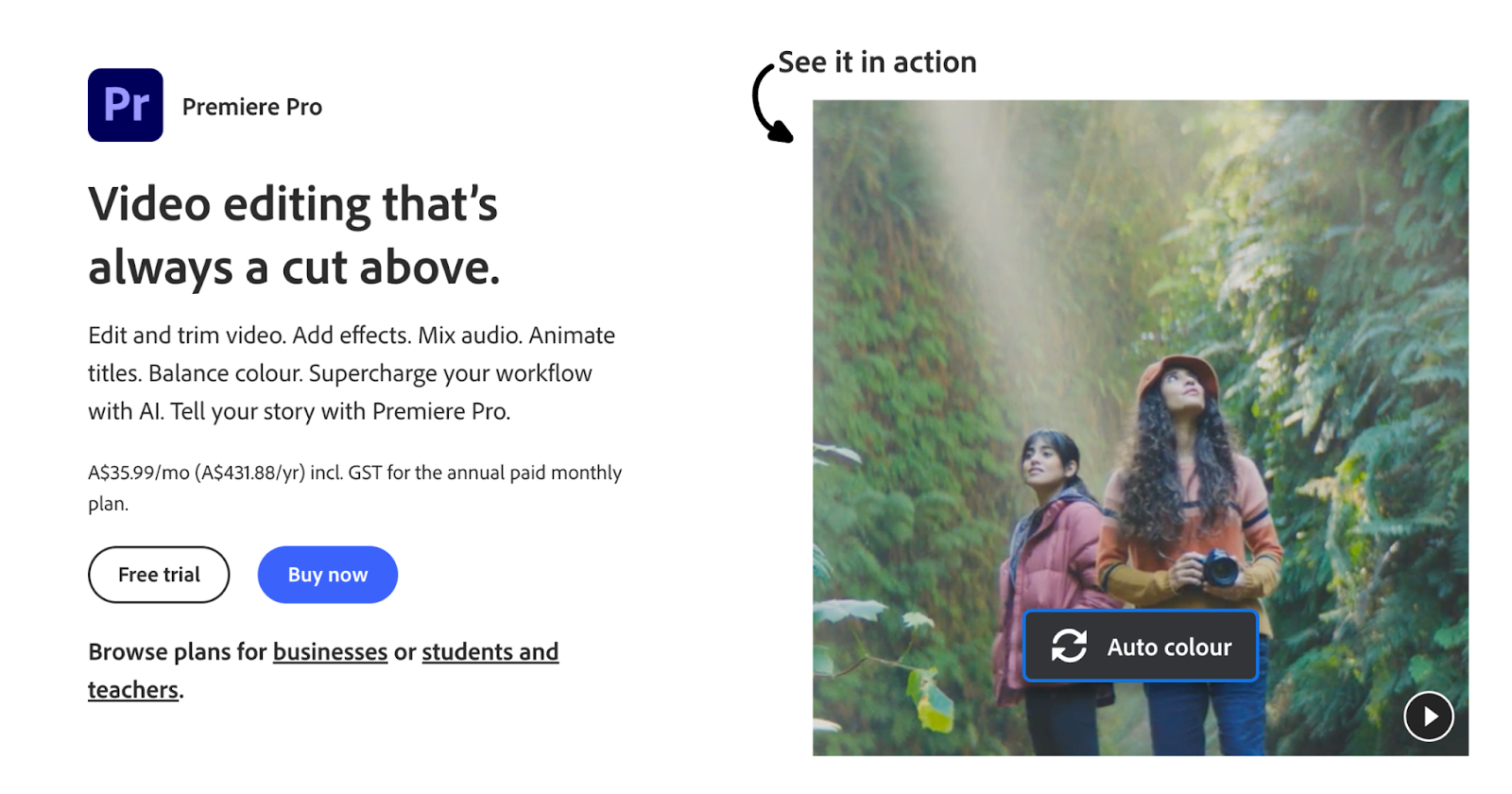
Video is the king of content, and with the rise of video content across social media and websites, the demand for skilled editors is higher than ever. YouTube, Instagram reels, TikToks, promotional videos for businesses, you name it: video editing offers a creative way to earn extra income.
You don’t need to be a Hollywood-level editor, either. Basic skills can go a long way in providing value to clients looking for polished content. Plus, video editing can be done anywhere with the right software and internet connection.
How to start: If you're new to video editing, start by learning editing software basics on Adobe Premiere Pro or Final Cut Pro. Once you're comfortable, offer your services to small businesses or content creators needing help with their video projects. You can use platforms like Instagram, LinkedIn, Fiverr, and Upwork to find clients, and platforms like Whop to teach others how to learn video editing.
24. Sell stock music or sound effects
Hear me out: if you’re somewhat musically inclined or have a talent for sound design, selling stock music or sound effects can be a profitable side hustle.
As I mentioned, any skills surrounding video content are in hot demand. Well, content creators, filmmakers, and game developers are constantly searching for the right audio files to use in their projects.
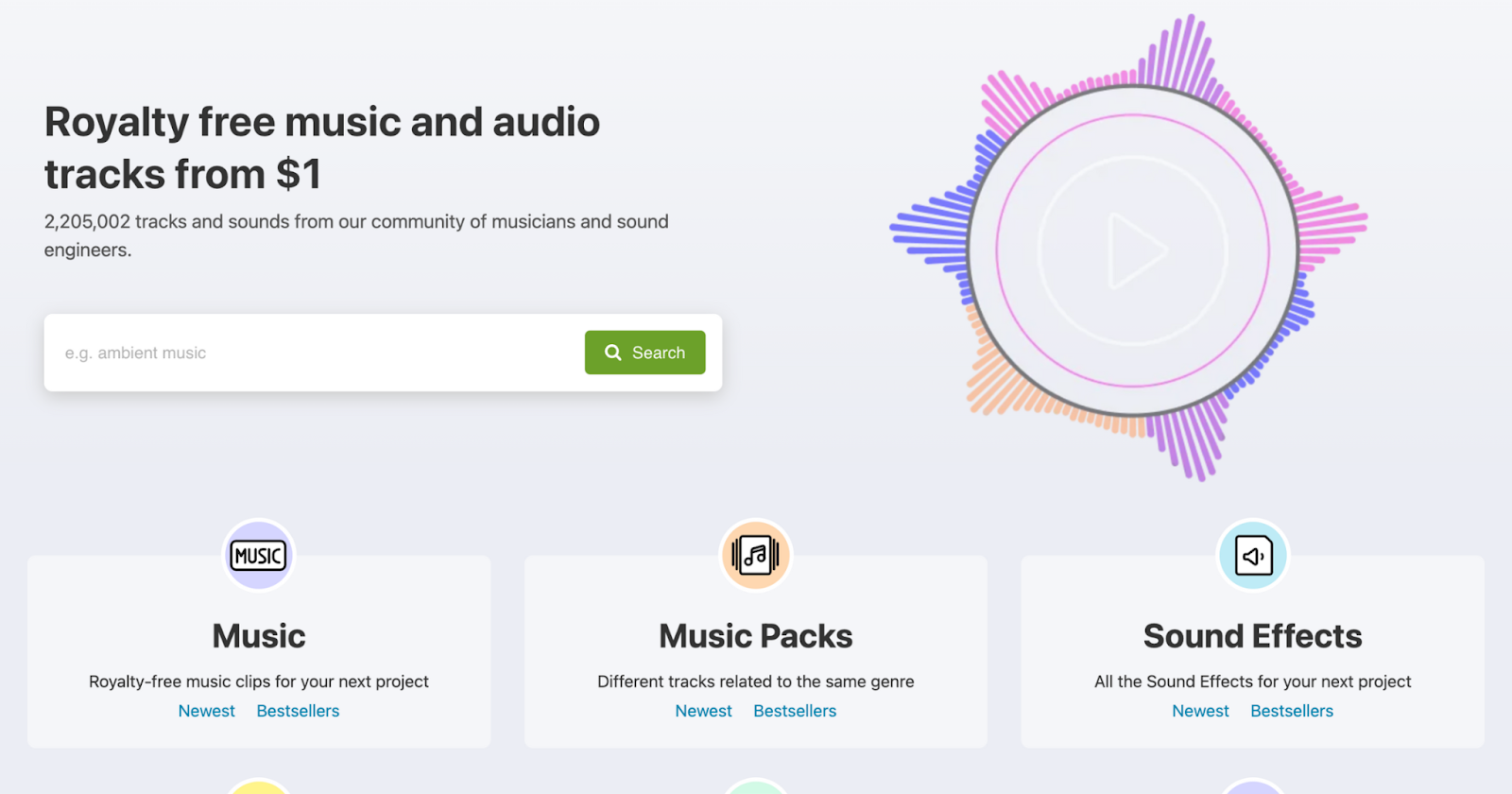
How to start: Once you create a music track or sound effect, you can sell it multiple times on platforms like AudioJungle or Pond5, generating passive income. It’s a great way to turn your passion for music or sound into a money-making opportunity.
25. Consulting services
No matter your background or profession, there's likely a consulting opportunity waiting for you. Maybe you have expertise in marketing, business strategy, or even a niche field like fashion or fitness; whatever it is, people seek guidance from someone with experience.
Consulting allows you to leverage your knowledge and help others while earning extra income. For example, a marketing consultant might help a brand boost its online presence, while a business development consultant could create personalized monthly strategies for networking and events.

Megan Camille runs a 7-figure consulting business on Instagram, empowering entrepreneurs to break into high-figure earnings.
How to start: Identify the skills or industry expertise you can offer as a consultant. Start by networking within your industry and offering free advice in exchange for testimonials, and then promote your services on LinkedIn to reach more potential clients and establish your credibility.
Here are the signs that you're ready to start a consulting business.
26. Create a membership site
With a membership site, you offer exclusive content, resources, or a community to paying members. This could be anything from a private group sharing business tips to a women’s community where you post beauty tutorials. Membership sites offer the potential for recurring income, as subscribers pay monthly or annually to access your content.
How to start: Choose a platform to host your membership site, like Whop, which allows you to curate private communities with chatrooms, courses, video uploads, and more.
Start by offering free content to build an audience, then gradually introduce paid content. Promote your membership site through your blog, social media, or email marketing to attract members.
Discover how to build and manage a thriving online space.
27. Become a content creator
No, it’s never too late to become a content creator. Plus, it can become a profitable side hustle if you have a passion or expertise in a particular area, such as travel, beauty, tech, or sustainable living.
Companies are always looking to partner with influencers with a targeted audience, even small ones. By building a loyal community and sharing authentic content related to your niche, you can collaborate with brands for sponsored posts or affiliate marketing opportunities while building your own personal brand simultaneously (which allows you to monetize with other avenues, like merchandise).
How to start: Pick a niche that interests you and create content on platforms like Instagram, TikTok, or YouTube. Focus on engaging with your audience, sharing your experiences, and establishing yourself as an authority. As your following grows, you can start contacting brands for collaborations.
28. Sell digital art
If you’re skilled at creating digital art, there are plenty of opportunities to turn your talent into a side hustle. You can create artwork such as illustrations, designs, or graphics and sell them on various online platforms.
Digital art can be sold as printables, logos, patterns, or even commissioned pieces for businesses and individuals. Many artists also turn their designs into products like phone cases, prints, or clothing.
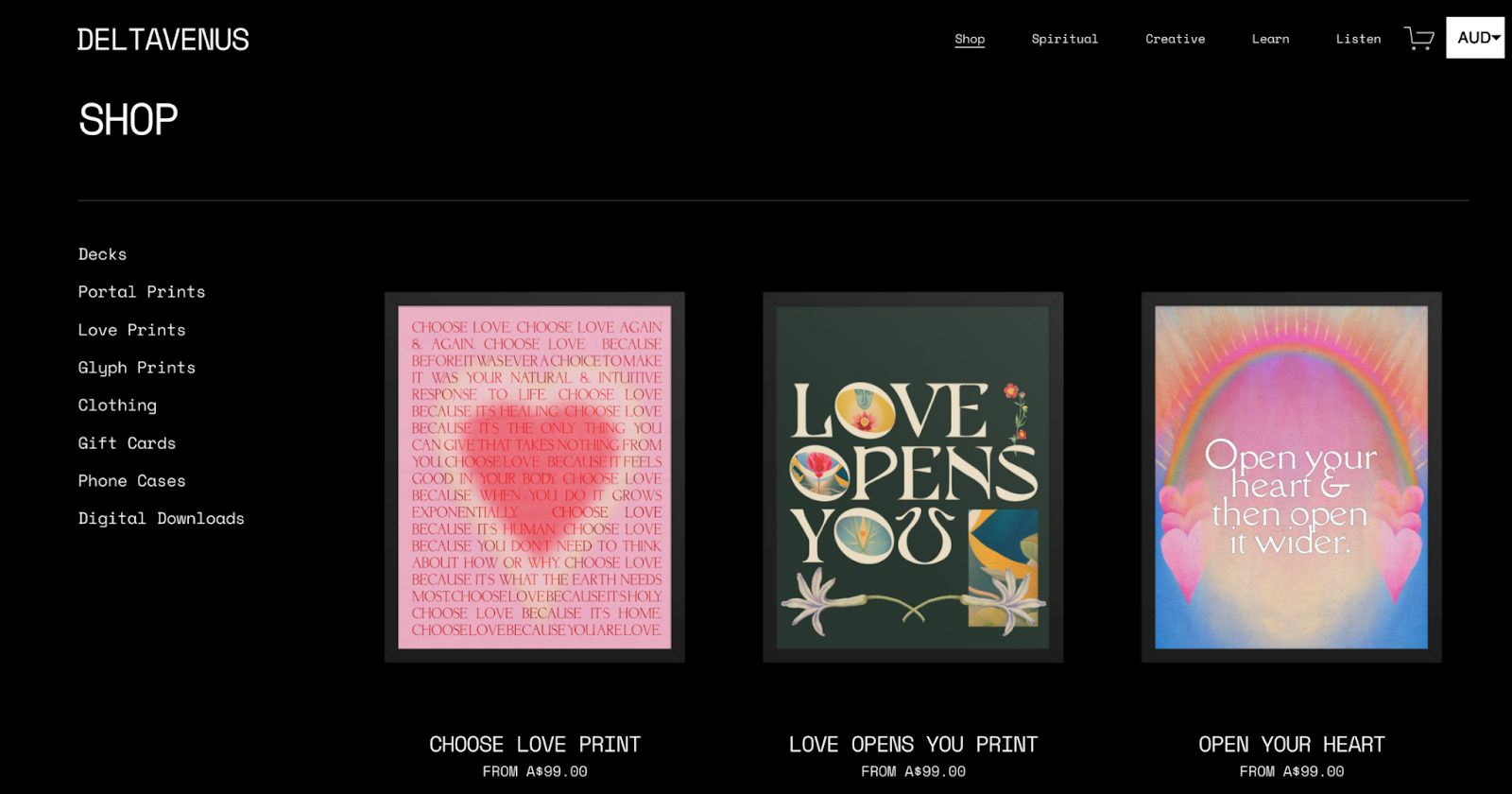
Australian-based artist Delta Venus creates digital art with an aura of whimsy, fantasy, and magic, focusing on quotes and phrases that prompt feelings of love, spirituality, and oneness.
How to start: Use Adobe Illustrator or Procreate tools to create your designs, then upload them to platforms like Etsy, Redbubble, or Society6. You can also set up a website or online store (like a whop) to sell your work directly to customers.
29. Flip furniture and home décor
Flipping furniture or home décor is a rewarding side hustle for anyone with a knack for restoration or design. In essence, you’ll be sourcing second-hand or vintage pieces, giving them a makeover, and reselling them for a profit.
That might mean reupholstering a chair, painting an old dresser, or adding a modern twist to a pair of vintage lamps. When you think about it, the possibilities are endless – especially if you’re the crafty, DIY type.
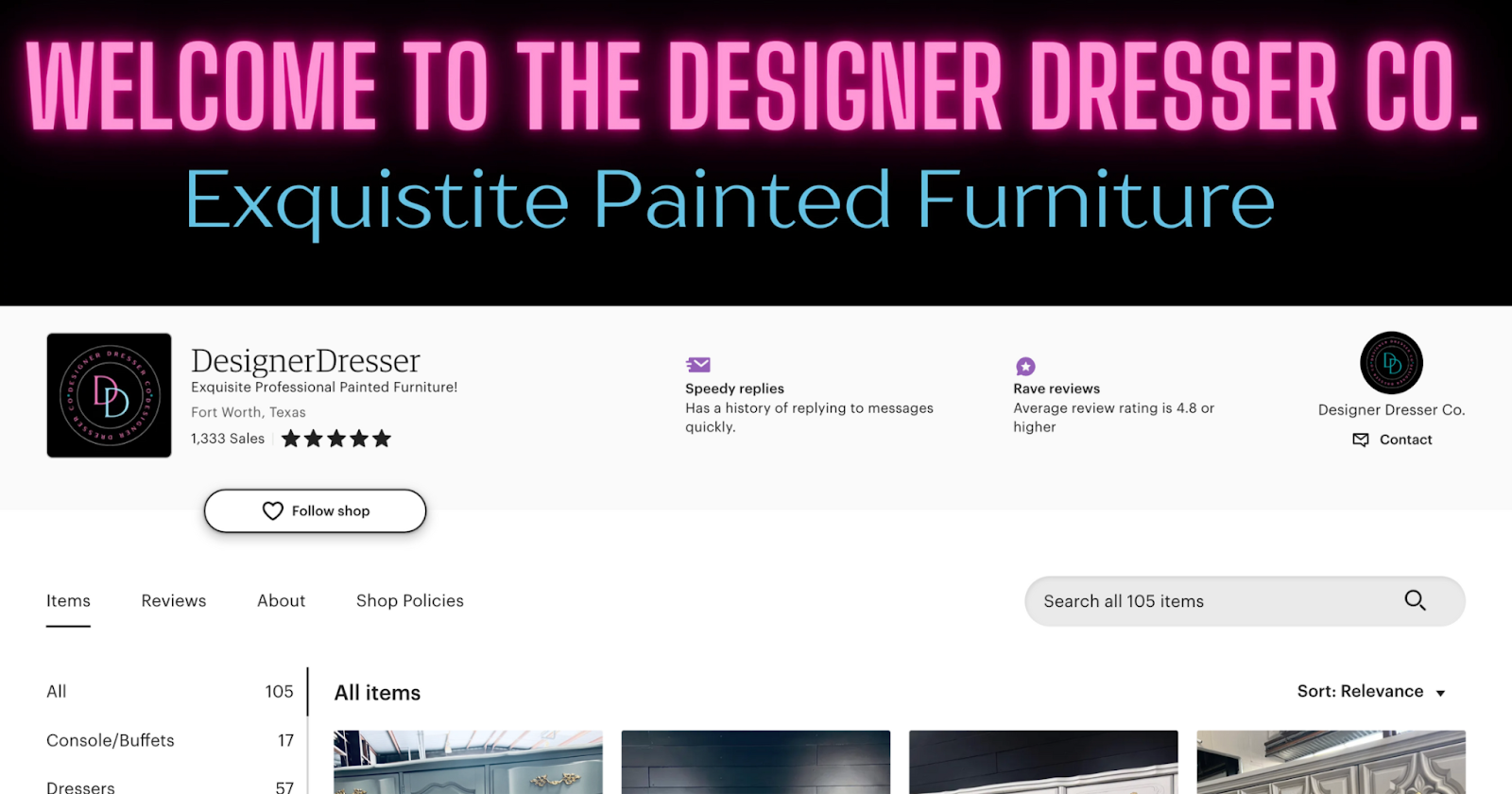
The Designer Dresser Co. on Etsy flips pre-owned dressers, cabinetry, and consoles out of Fort Worth, Texas.
How to start: Start by searching local thrift stores, garage sales, or online marketplaces for affordable furniture that needs some TLC. Once you’ve found your piece, restore it and list it on platforms like Facebook Marketplace, Craigslist, or Etsy.
30. Virtual fitness coaching
Becoming a fitness trainer or yoga instructor can be rewarding, especially if you're passionate about health. With so many people looking to improve their physical well-being, there’s always a huge demand for qualified trainers, whether it’s for in-person sessions or virtual classes.
The key to standing out is niching down – instead of being a jack-of-all-trades, think about who you can help specifically. If you’re in your 20s and have a background in college football, why not create personal training for college athletes?

Stan Browney is an online personal trainer, Gymshark affiliate, and founder of the 90-day challenge workout app ‘90App’.
How to start: It helps to get certified as a personal trainer, but experience can be enough, too. Start offering your services in local gyms, online platforms, or through your own website. You can run one-on-one sessions, group classes, or even create online courses through Whop to scale your hustle.
Find out how to launch a fitness community online and how you can sell fitness programs online.
31. Mystery shopping
Mystery shopping could be an interesting hustle if you enjoy a little retail therapy. Mystery shoppers are paid to visit businesses, evaluate their services, and provide feedback. It’s a fun way to earn money while doing everyday activities like shopping or dining out, but it’s not a huge earner. Still, the freebies add up, too.
How to start: Sign up with mystery shopping companies like Market Force or BestMark and complete assignments. You’ll be tasked with evaluating different aspects of customer service, from product quality to the overall shopping experience.
32. Gardening or landscaping services
This one’s for the green thumbs. If you’re the kind of person who gets joy from being down amongst the flower beds, offering gardening or landscaping services can be both a rewarding and profitable hustle.
Homeowners and businesses pay for professional help with their lawns, gardens, or outdoor spaces. It’s a great option for people who prefer working outdoors and enjoy hands-on tasks.
How to start: Begin by offering your services to neighbors or local businesses. Advertise your services on social media or join local community groups to spread the word. You can start with small gardening tasks like lawn mowing or plant care and expand into more intricate landscaping work as you gain experience.
33. Personal shopping and styling
Fashionistas and drip kings, listen up. Online stylists are hotter than ever. Personal shopping or styling could be a great side hustle if you have a knack for fashion and helping others look their best.
These days, particularly younger people are willing to pay for expert advice on clothing, wardrobe organization, and styling tips – which can be done in person or remotely. Think about your own style, who you could inspire, and how your style translates to audiences.
Then, start making social media content around fashion (get ready with me videos, wardrobe tours, etc). This will help build your credibility and personal brand.
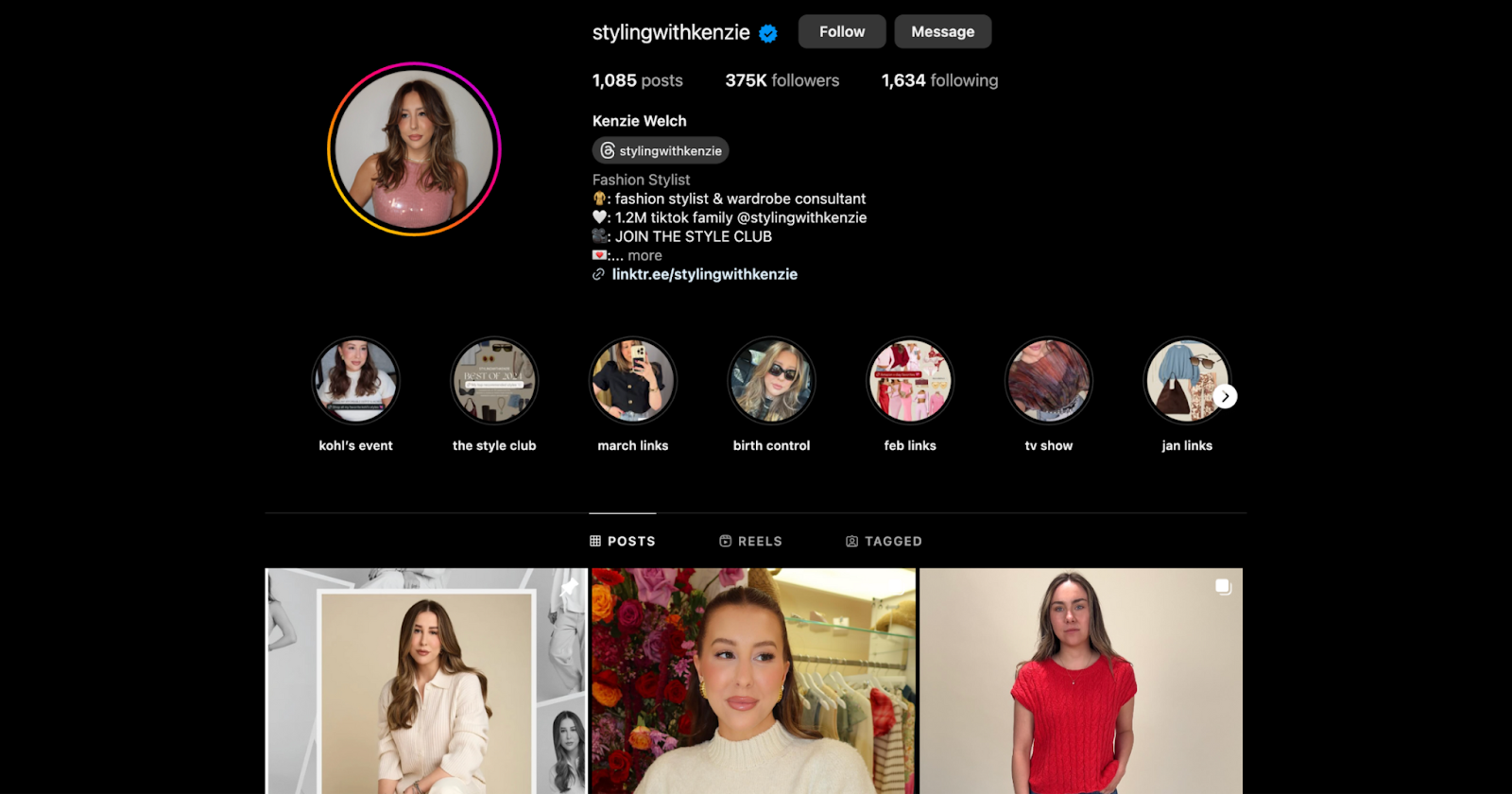
Kenzie Welch is a Gen-Z fashion stylist and wardrobe consultant with her own community channel, ‘The Style Club’.
How to start: Start by offering your services to friends and family or advertise your expertise on social media. You can even partner with clothing stores or online brands to offer personalized shopping experiences. As you gain more clients, you can build a solid reputation and grow your business.
34. Start a podcast and monetize
I mean, it’s a no-brainer for some people with the gift of gab. If you have a passion for storytelling and/or expertise in (or simply passion for) a certain subject, starting a podcast is a fun hustle with no cap on how far you can go.
Podcasts are a great way to connect with a dedicated audience, and once you’ve built up a listener base, you can monetize through sponsorships, ads, or premium content.
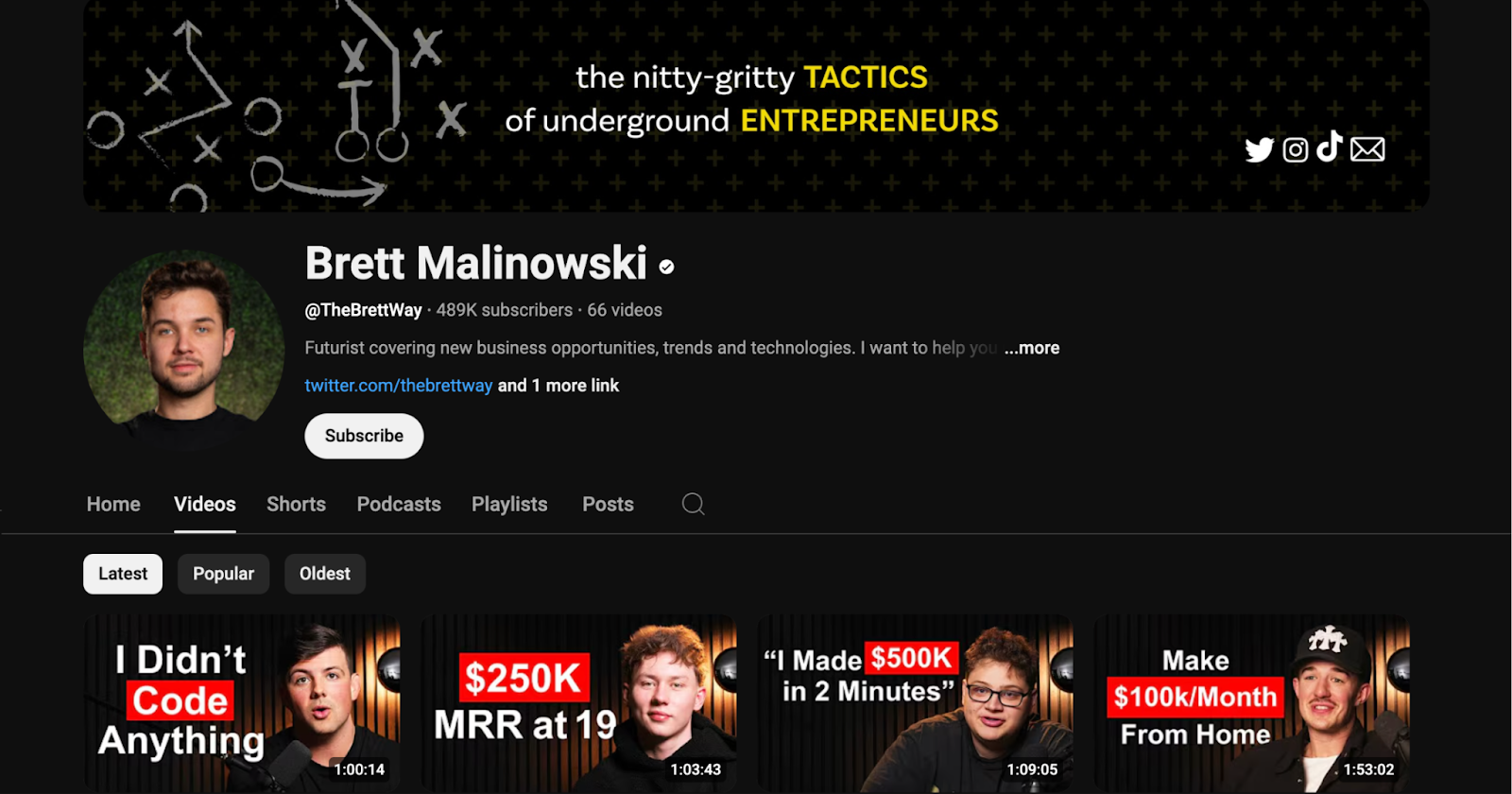
Brett Malinowski runs a YouTube channel interviewing other digital entrepreneurs about their start, success, and secrets. He has almost half a million subscribers and ample partnership and advertising opportunities.
How to start: Choose a topic you’re passionate about and start recording episodes. Promote your podcast on social media and podcast platforms. Once you’ve established an audience, reach out to potential sponsors or offer paid content to start earning money from your podcast.
35. Proofreading and editing
All you need is a keen eye for detail and a love for grammar. Proofreading and editing services can be a great way to make money if your brain is wired toward writing. Many writers, businesses, and students need help refining their work before it gets published or submitted. You can work on anything from blog posts and ebooks to academic papers, and it can fit around your day job.
How to start: Start by offering your services on platforms like LinkedIn, Upwork, or Fiverr. You can also build a website and market your services directly to potential clients. A strong portfolio of your editing skills and the ability to meet deadlines is key to attracting steady work.
36. Start a subscription box service
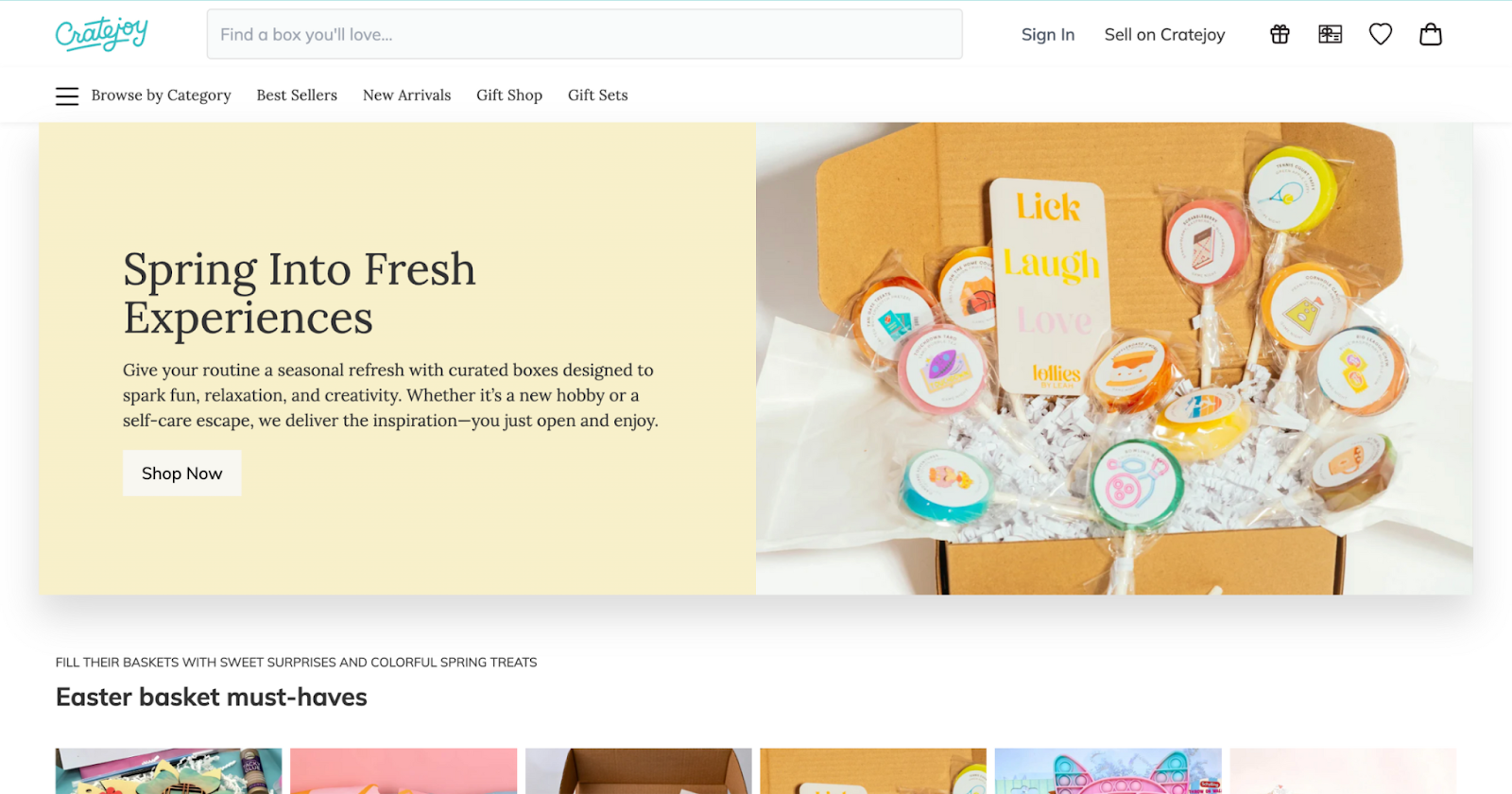
Subscription boxes are a fun way to create a curated customer experience. You can build a business around anything from beauty products and snacks to books and pet supplies. The subscription box market is growing, and there's room for creative niches that people are willing to pay for regularly.
How to start: Choose a niche that excites you, then create and source products for your box. Find a hole in the market, like eco-friendly pet care or vegan-friendly junk food.
There are platforms like Cratejoy or Subbly that can help manage the logistics of your subscription service. Market your box through social media and offer a variety of subscription levels to cater to different budgets.
37. Sell notes and study guides
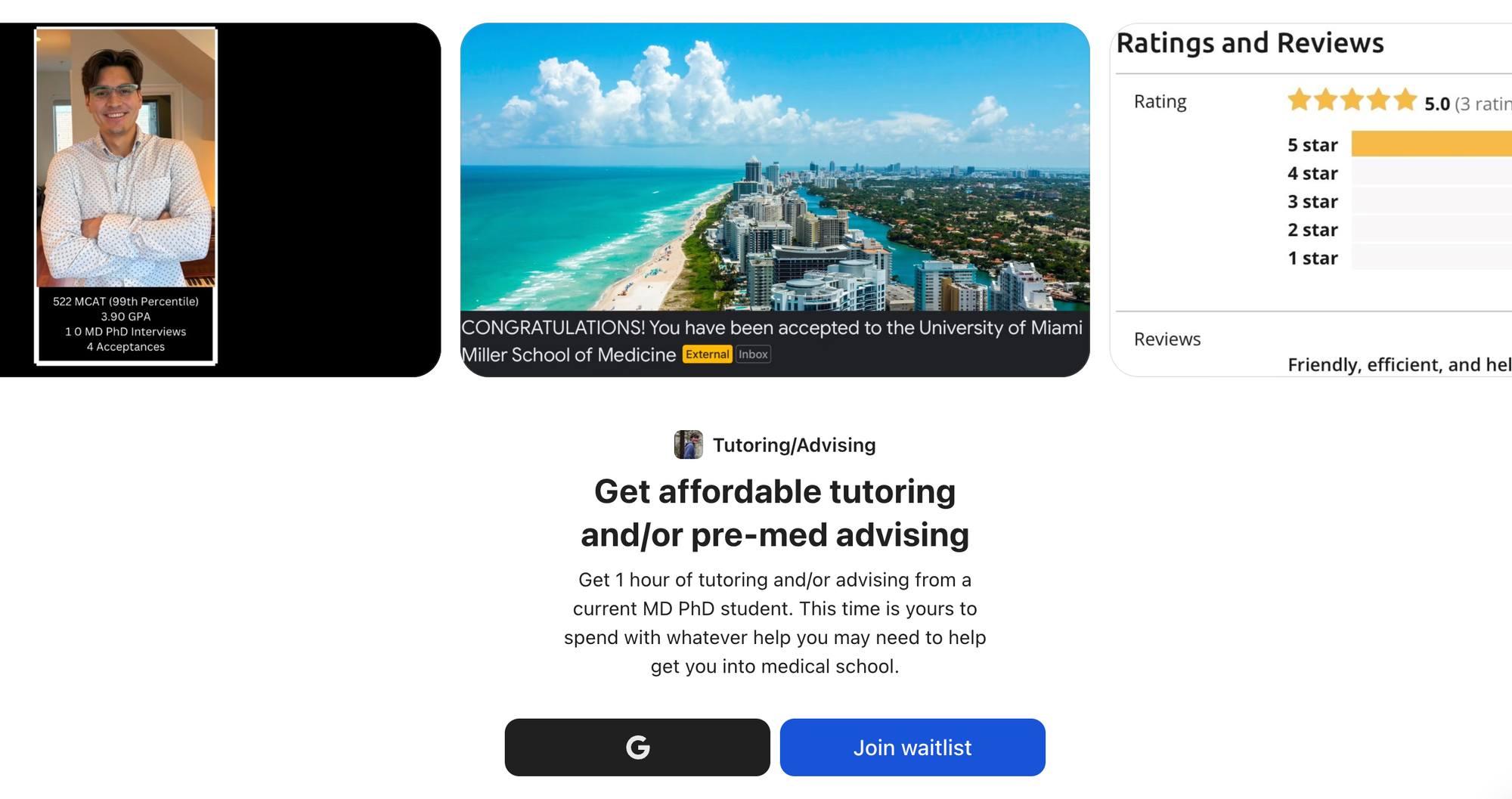
The perfect that allows you to profit off your own hard work. If you're a student or a former student who has aced your classes, you can sell your notes and study guides to other students who might need help. Educational content is highly valued, especially if it’s well-organized and easy to understand.
How to start: You can sell your notes on websites like StudySoup, Stuvia, or Notesale. Alternatively, you could offer tutoring services, helping others study for exams or complete assignments - Whop is the perfect place for this, as you can sell study guides with the files app, live lessons with the video calls app, and use online courses to share self-led courses.
38. Teach music or art lessons
If you’re skilled in music or art, teaching lessons can be a great way to share your expertise while earning extra income. You might teach kids how to play an instrument or help adults improve their painting techniques, the options are pretty much endless, as there’s always demand to learn new creative skills.
The best thing is that you can choose your own rates based on your experience and the value you can bring to clients. Plus, you can run your classes in person or virtually using platforms like Whop.
How to start: Advertise your services locally or on platforms like TakeLessons or LessonFace. You can offer in-person or online lessons, and as you build your reputation, you can increase your rates.
39. Rent out your space
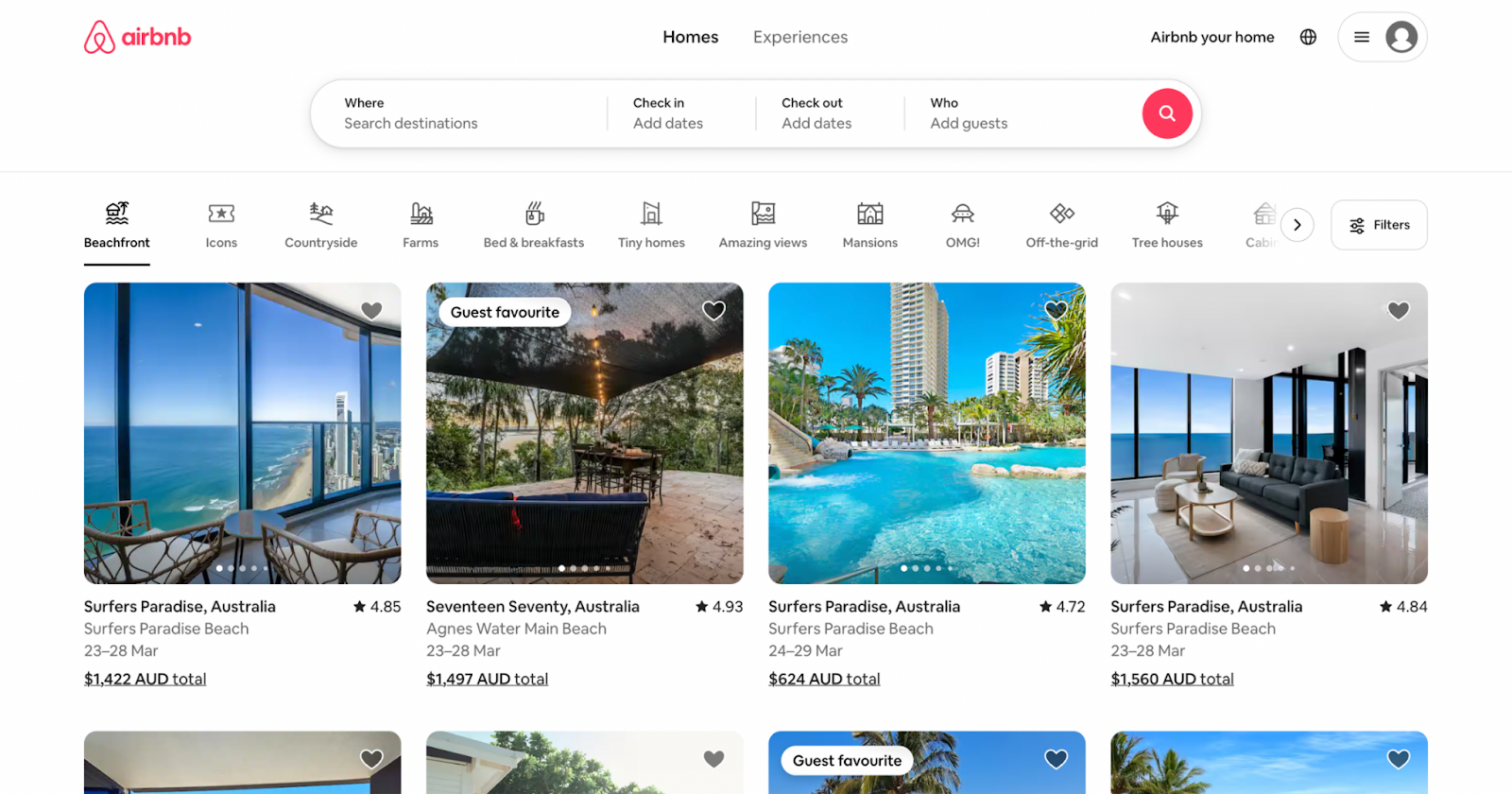
Here’s one that requires no skills, extra investment, and very little of your time. If you have extra space in your home (a spare room or an entire property), you can rent it on platforms like Airbnb or Booking.com. With the rise in travel, renting out your space can be a great way to earn passive income while helping visitors enjoy a comfortable stay.
How to start: Set up a listing on Airbnb, Vrbo, or other vacation rental platforms. Make sure your space is clean, well-decorated, and equipped with essential amenities – look at the best-rated rentals available in your area and what they provide.
High-quality photos and a well-crafted description will help attract guests and boost bookings.
40. Voiceover work

If you have a clear and expressive voice, voiceover work could be your side hustle. Think about it: voice actors are used everywhere, from commercials and video games to audiobooks and corporate videos. Oh, and the great thing is that you can often record from home with a decent microphone and soundproof space.
How to start: Begin by practicing your voice and recording samples. Websites like Voices.com or Fiverr allow you to connect with clients who need voiceovers. You can also create a social media or YouTube portfolio to showcase your work and attract potential clients.
Are side hustles a good way to make money online?
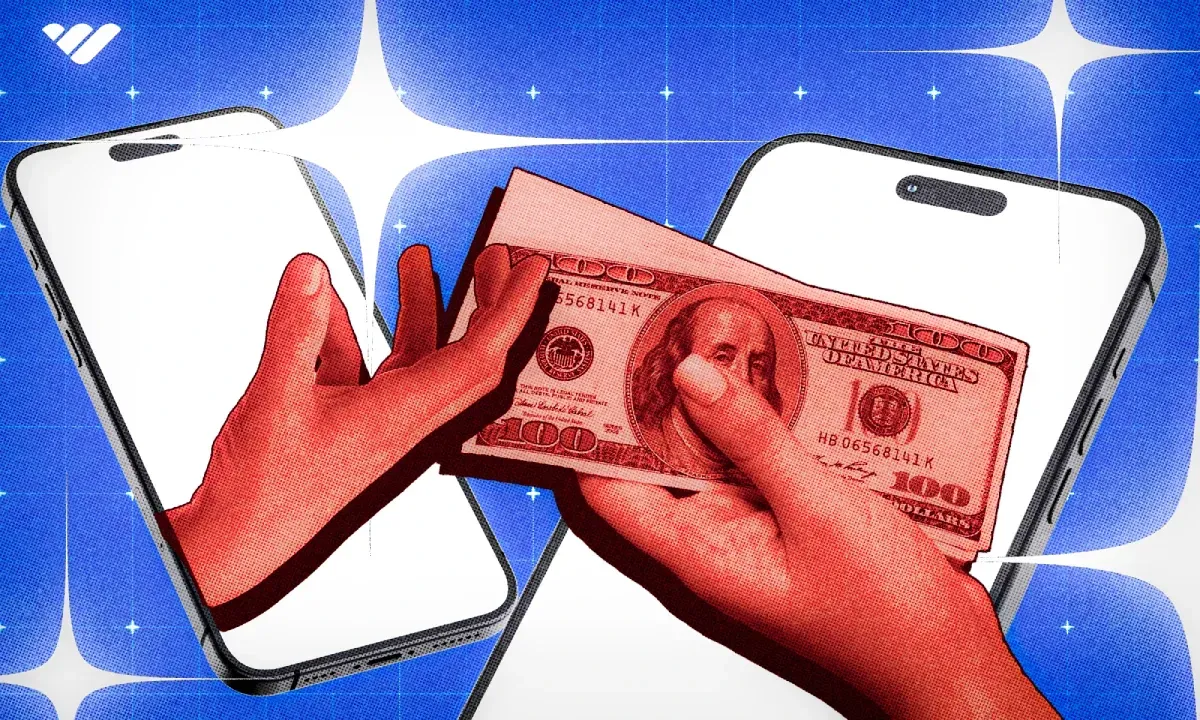
In short: yes.
Most of the side hustle ideas here can be done with a computer and an internet connection. The amount of money you make depends on your side hustle, how much time you can dedicate to it, and whether you already have an audience or are starting from scratch.
My first course made about $2,000 when I first launched it and courses after that have brought me almost $15,000 over the years. At the moment, my resources, courses, and downloadables net me about $1,500-$2,000 extra income each month - which is decent considering I don’t spend a ton of time on them now they’re created and out there in the world.
Creators on Whop are making over $7000 per month selling digital products, with top creators raking in more than $250,000 each a month.
How to find side hustle jobs
Starting a side hustle was a very organic process for me. I listened to my blog readers and newsletter subscribers and created something they consistently asked for. Creating a course wasn’t a deliberate move, but over time I’ve realized just how valuable it is to have your fingers in a few pies.
There are two ways you can find side hustles:
- Organically
- Actively
The organic process involves building an audience first. Maybe you start a blog or a newsletter, or maybe you work on growing your social media following. When you have a large enough following, you’ll start to notice patterns. Followers will ask you similar questions and you’ll find yourself talking about the same things over and over again.
This can organically translate into a side hustle. For example, you might answer a question with a downloadable guide or create a course that walks your audience through a specific task they struggle with.
Alternatively, you can actively seek out side hustles. This is a more direct approach and usually means you’ll make money quicker. While many online side hustles require some sort of audience or online presence, many offline side hustles don’t. For example, you can start DoorDashing tomorrow if you want to, or you can put flyers through your neighbors’ doors today to promote your home IT services.
Either way, follow these steps to ensure you’re choosing the right side hustle for you:
- Consider what you’re good at. Do you have design skills? Can you make macrame plant hangers? Are you a keen photographer? Think about what skills you have that can be monetized. You’re more likely to be successful with a side hustle you enjoy, so it pays to choose something you’re interested in.
- Determine your need for money. Do you need money to pay the bills right now or are you looking for a sustainable way to top up your income each month? If you need the money ASAP, look at side hustles that pay immediately, like delivering food and packages or filling out online surveys.
- Think about the future. Do you want your side hustle to become your full-time job one day? This will determine which side hustle you choose. For example, you might not want to be a full-time dog walker, but you might decide you’d like to quit your job to run a blog at some point in the future.
What are the best side hustle jobs of 2026?
The best side hustle jobs this year are predominantly online-based. Technology has made it easier than ever to sell services and products to people all over the world, but you can still make money locally too.
Here are some of the best side hustle jobs this year:
- Freelancing. Plenty of businesses are looking for external help with writing, design, and marketing.
- Start an ecommerce store. Advanced technology has made it easier than ever to sell products to people all over the world.
- Get sponsorship on social media. As more brands seek out micro-influencers to promote their products, there’s an opportunity to monetize your social media following—however small it is!
- Create online courses. An increasing number of people are looking to learn online. Online courses are more credible today than they’ve ever been.
- Sell handmade goods. Despite the surge in technology, people still want homemade products.
- Affiliate marketing. Capitalize on the rise in online purchases and promote affiliate links to get a slice of commission.
However, the best way to make an income is not by focusing on one side-hustle, but many. For example, if you are a writer, why not start a paid community, sell checklists online side that, create and sell an ebook, a course, and earn income with affiliate marketing by promoting other products to your own audience? You can do all of this, and more, right here on Whop.
Start your side hustle with Whop
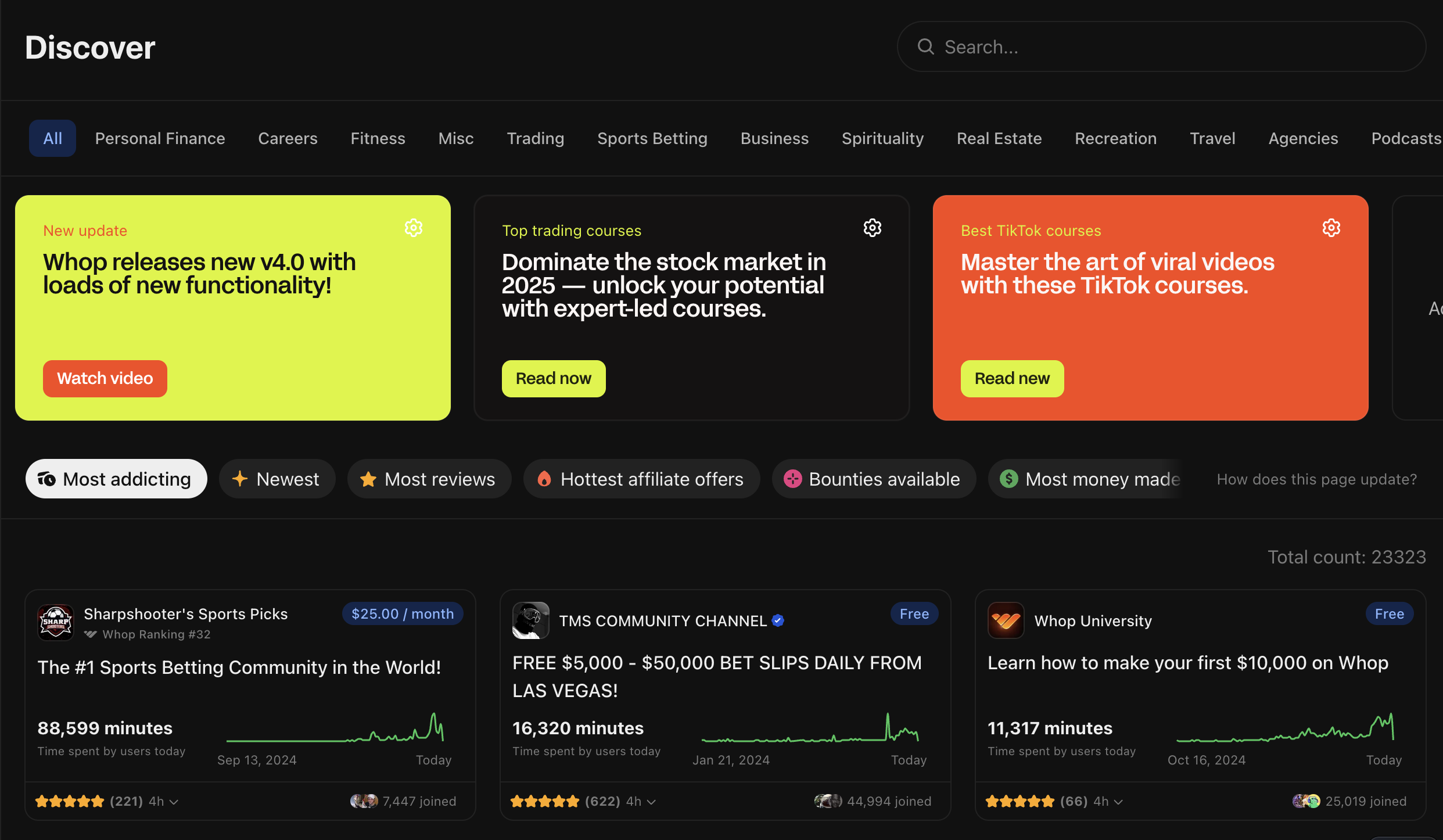
I love having a side hustle for many reasons, but the biggest one? I get to call the shots.
I can work on my side hustles as little or as much as I like, and they bring me an extra monthly income.
While some side jobs require an annoying amount of work to get set up, it's breezy for most of the hustles listed above. And for any that are digital, Whop can get you started in no time.
With Whop, you can sell almost anything online. We mean it: courses, ebooks, newsletters, photos, freelancing services, paid communities, and more. It’s the most addicting mall on the internet for a reason.
Plus, our fees? Competitive, to say the least.
So, are you finally ready to take your first step away from the rat race? Sign up with Whop today, and start selling within the hour.
Read next:



